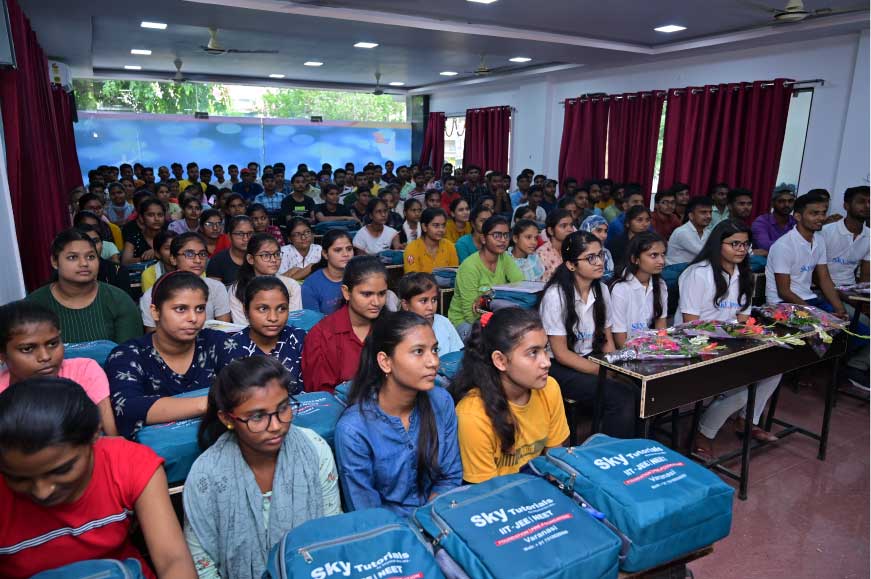Overview
Sky Tutorials is a renowned coaching institute in Varanasi that specializes in preparing students for competitive exams like NEET, IIT-JEE. Their expert faculty and comprehensive study material have helped students achieve their dreams of getting into top medical and engineering colleges.
If you are looking for the best NEET coaching in Varanasi, Sky Tutorials should be your top choice. Their NEET coaching program is designed to cover all aspects of the syllabus, provide regular tests and assessments, and ensure that students are well-prepared for the exam. The faculty at Sky Tutorials is experienced and dedicated to helping students achieve their goals.
In addition to NEET coaching, Sky Tutorials also offers JEE coaching, , and other programs to help students excel in their academic pursuits.
Sky Tutorials – Best NEET Coaching in Varanasi | JEE Coaching
4. Semiconductors and Communication Systems:
The diodes, transistors, logic gates, modulation, and communication systems are examples of electronics.
5. Particle Physics and Cosmology:
Elementary particles, the standard model, the cosmic background electromagnetic radiation, and dark matter are all concepts in particle physics and relativity.
Looking for the best NEET coaching in Varanasi? Look no further than Sky Tutorials. Our expert faculty, comprehensive study material, and regular tests and assessments ensure that our students are well-prepared for the exam. We also offer JEE coaching, Olympiad coaching, and other programs to help students excel in their academic pursuits.

Introduction
It can be difficult to fully prepare for the IIT JEE exam, particularly for the Physics parts. A well-organized study schedule is essential for success in this topic. To assist you in successfully planning your preparation, we will present a comprehensive IIT JEE Physics syllabus in this blog article.
I. Mechanics
1. Units and Dimensions:
Use in Applications, dimensional analysis, and fundamental and derived units in the area of units and dimensions.
2. Kinematics:
Projectile motion, relative motion, motion in one, two, and three dimensions, as well as equations of motion.
3. Laws of Motion:
Newton’s laws, gravity and non-inertial frames, contact, circular motion, and restrictions are all examples of laws of motion.
4. Work, Energy, and Power:
Conservation rules, conservative and non-conservative forces, the work-energy theorem, power, and impact concepts are all parts of the phrase “work, energy, and power.”
5. System of Particles and Rotational Motion:
Centre of mass, rotational motion of a solid object, the moment of inertia, power, and equilibrium make up the system of particles and motion during rotation.
II. Thermodynamics and Kinetic Theory
1. Thermal Physics:
Temperature, heat, the rules of thermodynamics, heat engines, and waste are all part of thermal physics.
2. Kinetic Theory of Gases:
Ideal gas behavior, the Maxwell-Boltzmann distribution, kinetic theory models, and specific heat capacity are all included in the kinetic theory of gasses.
3. Calorimetry and Thermal Expansion:
Heat transfer, energy meters, and the expansion of solids, liquids, and gasses are all examples of energy measurement and thermal expansion.
4. Oscillations and Waves:
Simple periodic motion, vibrations of a spring-mass system, decreased and forced oscillations, pattern characteristics, and the Doppler effect are all examples of oscillations and patterns.
5. Electrostatics:
Electric field, Gauss’s law of electric potential, and capacitance are all concepts in electrostatics.
III. Electromagnetism
1. Current Electricity:
Ohm’s law, the rule of Kirchhoff, resistors, capacitors, inductors, and electrical circuits all apply to current electricity.
2. Magnetism:
Ampere’s law, the Biot-Savart law, magnetic materials, and magnetic induction are all aspects of magnetism.
3. Electromagnetic Induction and Alternating Current:
Faraday’s law, Lenz’s law, self-inductance, mutual induction, AC circuits, and transformers are all related to electromagnetic induction.
4. Electromagnetic Waves:
Polarization, interference, the wave nature of light, and the electromagnetic field.
5. Optics:
Optics includes interference, diffraction, sound interference, reflection, and lenses and mirrors.
IV. Modern Physics
1. Dual Nature of Matter and Radiation:
Photoelectric effect, his wavelength, Davisson-Germer experiment, and Bohr’s model all illustrate the dual nature of matter and light.
2. Atomic Physics:
Atomic physics includes the study of radiation, X-rays, and atomic spectra.
3. Nuclear Physics:
Nuclear physics includes the study of nuclear elements, nuclear reactions, binding energy, and the processes of fusion and fission.
The diodes, transistors, logic gates, modulation, and communication systems are examples of electronics
Conclusion
A thorough comprehension of the IIT JEE Physics curriculum is necessary for exam success. You may properly manage your study schedule and make sure you cover all the relevant topics and ideas according to this comprehensive syllabus. Don’t forget to allot enough time for practice, working through sample papers, and taking mock exams to expand your understanding and improve your problem-solving abilities. Wishing you success with your planning!
